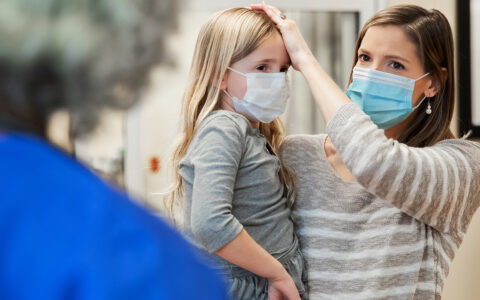Loss of smell and taste were two of the first recognized symptoms that indicated a person may have COVID-19. Roughly two years later, hyposmia is still a prominent symptom of the disease, with many patients not regaining full use of their senses for weeks or even months after recovering from infection.
“Almost all patients will have some smell loss when assessed using objective measures,” said Justin Turner, M.D., medical director of the Smell and Taste Center at Vanderbilt University Medical Center, one of only a few such centers in the nation. “That leaves potentially millions of post-COVID-19 patients with persistent smell loss, and we don’t yet fully understand why these patients do not recover.”
To better evaluate and predict who is at risk of persistent olfactory dysfunction after COVID-19, Turner and colleagues at Vanderbilt, including Rakesh Chandra, M.D., chief of rhinology and skull base surgery, Timothy Trone, M.D., an assistant professor of otolaryngology-head and neck surgery, and ENT resident Nikita Chapurin, M.D., conducted two large studies of patients with confirmed COVID-19.
Published in the International Forum of Allergy and Rhinology, the studies shed light on the prevalence, time course and factors associated with hyposmia.
A Common, Persistent Symptom
Corroborating reports that olfactory dysfunction is common after COVID-19, the research team’s survey study of 1,003 adult patients found that 73 percent experienced some degree of smell and taste loss or dysfunction after a COVID-19 diagnosis, with the average hyposmia case lasting 19.7 days.
However, many patients reported quite prolonged chemosensory symptoms, with 13.4 percent experiencing smell loss for more than four weeks, and 10.7 percent for more than six weeks.
“Nearly 500 million people have been infected by COVID-19, and even if only 10 percent have prolonged hyposmia recovery, that’s a significant number of patients with a reduced quality of life,” Chapurin said.
Significant predictors of moderate to severe hyposmia included male gender, sore throat, gastrointestinal symptoms, prior taste disturbances and absence of fever. Hyposmia duration was significantly associated with body mass index and shortness of breath, and it also correlated with the initial severity of hyposmia.
“We hope clinicians can use this data and other data coming out around the country to give patients a more accurate expectation of recovery,” Chapurin said.
Monitoring Olfactory Loss
Also reported in the study, total scores from the sinonasal outcome test – SNOT-22 – correlate with many COVID-19 symptoms, including hyposmia prevalence and duration.
“We show that this clinically validated tool may be useful in assessing and following symptom recovery after COVID-19, and one of the questions specifically addresses olfactory dysfunction,” Chandra said.
The 22-item questionnaire assesses a range of symptoms related to quality of life in patients with nasal and sinus disorders, with patients rating each symptom from zero (absent) to five (severe).
Significant predictors of higher total SNOT-22 scores included patient age, female gender, history of chronic rhinosinusitis, diabetes, hypertension, asthma, fewer days from COVID-19 diagnosis to clinic evaluation, and higher body mass index.
Demographics and Treatment
After investigating population differences between COVID-19 and other post-viral olfactory dysfunction, the research team found that patients with olfactory dysfunction after COVID-19 are more likely to be younger in age and female compared to those that develop the condition after another upper respiratory infection.
Additional results suggest that patients with prolonged olfactory dysfunction after COVID-19 lasting more than two months have somewhat more severe hyposmia.
“This is one of the largest studies to date to compare post-COVID-19 and other post-viral olfactory loss,” Chandra said.
The group is now focusing their efforts on researching the rate of permanent hyposmia after COVID-19 infection.
“We are going to need to start treating these long-term issues,” Chandra said. “Even with normal seasonal colds, 0.5 percent of people have a permanent effect on their senses. The number for COVID-19 is bound to be higher than that. We think it’s going to affect a whole generation of people.”







